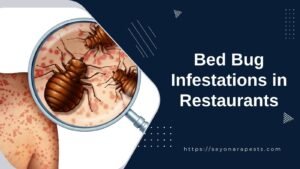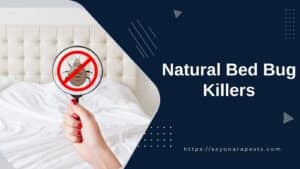Effective Bed Bug Extermination
Dealing with bed bugs can be a nightmare, but knowing the right tricks can make all the difference. Two killer methods stand out: cranking up the heat or turning down the cold.
Using High Temperatures
Bed bugs hate the heat. Cranking up the temperature is a surefire way to send them packing. Studies show these pests bite the dust at 113°F (45°C) if you keep it up for 90 minutes, or at 118°F (47.8°C) for just 20 minutes. For the stubborn ones, like eggs, you need to hit 54.8°C to make sure they’re gone for good.
Here’s how you can turn up the heat:
- Professional Heat Treatments: Experts can heat your entire room above 50°C, ensuring even the toughest eggs are toast.
- Portable Heat Chambers: Great for treating furniture or personal items.
- Laundry: Wash and dry your bedding and clothes on high heat.
Remember, the key is to keep the heat consistent throughout the area, so those sneaky bugs don’t find a cool spot to hide. Check out our detailed guide on killing bed bugs with heat for more tips.
Freezing Method
If you prefer the cold shoulder approach, freezing can also do the trick, though it’s a bit slower. Pop infested items in a freezer for at least 8–10 hours. But beware, not all home freezers get cold enough to guarantee a kill.
Here’s what you need to know:
- Freezer Settings: Make sure it’s set to 0°F (-17°C) or lower.
- Bag It Up: Put items in plastic bags before freezing to keep the bugs contained.
- Patience: Give it enough time for the cold to penetrate to the core of the items.
For more on this chilly method, check out our comprehensive article on freezing bed bugs.
Whether you’re heating things up or cooling them down, following these methods carefully is crucial to wipe out bed bugs completely. Combine these with other strategies like vacuuming and insecticides for a full-on assault. And always play it safe to avoid any mishaps.
Chemical Solutions
Got bed bugs? Chemical solutions might just be your best bet. Let’s break down the options you have, whether you’re a DIY enthusiast or prefer calling in the pros.
Commercial Chemicals
If you’re thinking of tackling the bed bug problem yourself, there’s a bunch of insecticides you can grab off the shelf. Here’s a quick rundown:
| Chemical Type | Examples |
|---|---|
| Pyrethrins and Pyrethroids | Bifenthrin, Deltamethrin |
| Desiccants | Silica Gel, Diatomaceous Earth |
| Biochemicals | Cold-Pressed Neem Oil |
| Pyrroles | Chlorfenapyr |
| Neonicotinoids | Imidacloprid |
| Insect Growth Regulators | Methoprene, Hydroprene |
These chemicals can be pretty effective, but there’s a catch. Sometimes, they just don’t pack enough punch to wipe out the bed bugs completely, or they can’t reach those sneaky hiding spots. For more tips on using these chemicals, check out our guides on bed bug insecticides for eradication and DIY bed bug control methods.
Professional Pest Controllers
When store-bought stuff doesn’t cut it, it’s time to call in the big guns. Professional pest controllers have access to stronger treatments and know all the tricks of the trade.
They can figure out how bad the infestation is and come up with a plan to get rid of those pests for good.
According to Medical News Today, the Pest World website lists licensed pros who can handle bed bug problems effectively. If you need professional help, check out our page on professional bed bug treatment options.
Whether you’re a homeowner, hotel manager, or renter, dealing with bed bugs quickly and effectively is crucial. While chemicals can help, don’t forget about safety, the environment, and the risk of bugs becoming resistant.
Combining chemical treatments with other methods like killing bed bugs with heat and using steam to kill bed bugs can give you a better shot at effective bed bug extermination and keeping them away for good.
Integrated Pest Management: Your Bed Bug Battle Plan
Integrated Pest Management (IPM) is your go-to strategy for tackling bed bugs without going overboard on chemicals. It’s all about using a mix of smart tactics to keep these pesky critters at bay for good.
Why IPM Matters
IPM is the secret sauce for kicking bed bugs to the curb. Just spraying pesticides won’t cut it. IPM is like a Swiss Army knife—it uses a bunch of different tools to get the job done.
Think of it as a combo of checking for bugs, keeping an eye on things, cleaning up clutter, sealing up cracks, using barriers, and trying non-chemical methods. If you need to, you can still use pesticides, but only as a last resort. The real magic of IPM is that it aims for long-term solutions, not just quick fixes.
Sprucing Up Your Space
Making some changes around your home is a big part of IPM. These tweaks help you deal with bed bugs now and keep them from coming back. And hey, bed bugs don’t care how clean you are—they can show up anywhere.
Here’s what you can do:
- Clear out clutter where bed bugs might hide
- Seal up cracks and crevices to block their entry
- Use protective covers on mattresses and pillows
- Make sure bed frames and headboards are crack-free
Pair these steps with methods like killing bed bugs with heat, using steam to kill bed bugs, or freezing to kill bed bugs, and you’ve got a solid defense. Keep an eye out for any signs of bed bugs for at least 6 weeks. If you don’t see any, you might just be in the clear.
Getting the hang of IPM takes some effort, but it’s worth it. Whether you’re a homeowner, renter, hotel manager, or run a place like a library, restaurant, or airport, knowing these tricks can help you keep bed bugs under control and stop them from spreading.
Non-Chemical Controls
Getting rid of bed bugs without chemicals can be a game-changer. These methods are not only effective but also safer for you and the environment. Let’s break down how steaming, heating, vacuuming, and washing can help you win the battle against these pesky invaders.
Steaming and Heating
Steaming is like a secret weapon against bed bugs. It uses high temperatures to zap them out of existence. Bed bugs and their eggs can’t survive temperatures over 140 degrees Fahrenheit. So, grab a commercial steamer that can hit those temps for the best results.
This method works wonders on mattresses, box springs, bed frames, and other furniture. Just make sure to follow the steamer’s instructions to avoid damaging delicate stuff.
If steaming isn’t an option, heating is your next best bet.
You’ll need special equipment to heat-treat your belongings effectively. Simply cranking up your thermostat or using space heaters won’t cut it. Professional gear is designed to maintain the high temperatures needed to wipe out bed bugs.
Vacuuming and Washing
Vacuuming is your frontline defense in the war on bed bugs.
Aim to vacuum every few days if you’re dealing with an infestation. Focus on the mattress, bedding, upholstered furniture, carpets, and any nooks and crannies in walls or floorboards. After vacuuming, toss the vacuum bag outside to make sure those bugs don’t find their way back in.
Washing your clothes and bedding in hot water, followed by a high-heat tumble dry, is another effective strategy. The combo of hot water and dryer heat can kill bed bugs.
Here’s a quick guide to the recommended temperatures and durations for washing and drying:
| Treatment Method | Temperature | Duration |
|---|---|---|
| Washing | Hot water | Full wash cycle |
| Drying | High heat | At least 30 minutes |
Using these non-chemical methods as part of a comprehensive plan can significantly boost your efforts to get rid of bed bugs. Combine steaming, heating, vacuuming, and washing with preventive measures, and you’ll be well on your way to a bug-free home.
Alternative Methods
When you’re up against bed bugs, you want solutions that work and are easy to use. While calling in the pros is always a good idea, there are some DIY tricks you can try alongside other effective bed bug extermination methods.
Let’s check out a couple of these: using silica gel and baking soda, and giving rubbing alcohol a shot.
Silica Gel and Baking Soda
Silica gel, that stuff you find in shoe boxes and food packages, can actually help get rid of bed bugs by drying them out. Crush up those silica gel beads into a fine powder and sprinkle it around where the bed bugs are hanging out. But be careful—breathing in silica can be bad for your health. A safer bet? Baking soda. It can also dry out and kill bed bugs.
These methods work best when you use them with other strategies like vacuuming to eliminate bed bugs and using steam to kill bed bugs.
Rubbing Alcohol
Rubbing alcohol is another easy-to-find solution. Pour some into a spray bottle, and you’ve got yourself a direct-contact pesticide. Spray it right on the bed bugs, and they’ll be gone in no time. Just remember, alcohol only kills bed bugs on contact and doesn’t have any lasting effects, so it won’t get the ones that show up later.
For a more thorough approach, mix rubbing alcohol with other treatments like heat or freezing to kill bed bugs. But be careful—alcohol is flammable, so use it safely.
If you’re dealing with a bed bug problem, it’s good to know all your options. Whether you’re looking into natural remedies for killing bed bugs or figuring out the best bed bug elimination techniques, being informed is your best weapon.
Always think about the safety of your home and how well the method works when you’re tackling a bed bug infestation.
Safety and Health Considerations
When dealing with bed bugs, keeping everyone safe should be your main concern. There are many ways to kill bed bugs, but not all are risk-free. Let’s talk about the safety and health issues, especially with insecticides and diatomaceous earth.
Risks of Insecticides
Insecticides are a go-to for many when fighting bed bugs. But the ones you can buy at the store often aren’t strong enough or can’t reach where the bugs hide. Medical News Today suggests that if store-bought insecticides don’t work, hiring a professional pest controller is a safer and more effective choice.
Using insecticides can be risky if not done right. Misuse can expose you, your family, and pets to harmful chemicals. Always ensure good ventilation, wear protective clothing, and follow the product instructions to the letter.
Before you grab that chemical spray, think about alternative methods or get advice from a professional bed bug treatment service to find the safest and most effective way to tackle the problem.
Health Hazards of Diatomaceous Earth
Diatomaceous earth is often seen as a natural way to kill bed bugs. But it’s not without its dangers. According to the NCBI, breathing in diatomaceous earth can lead to lung issues like silicosis and even lung cancer.
It can also dry out your skin and irritate your nose and nasal passages. Plus, bed bugs can sometimes become resistant to it, making it less effective.
To use diatomaceous earth safely, clean up thoroughly after applying it, use products with larger particles, limit direct exposure, and apply it only in specific areas. If you’re thinking about this method, check out using diatomaceous earth to kill bed bugs for detailed instructions and safety tips.
When fighting bed bugs, always put the health and safety of everyone in the home first. Look into effective bed bug extermination methods that are both safe and effective, and don’t hesitate to get professional help to make sure you’re doing it right.



